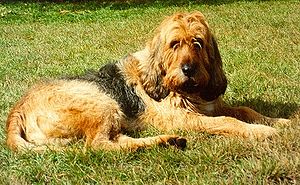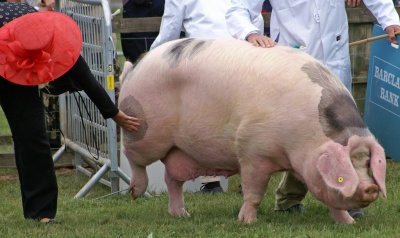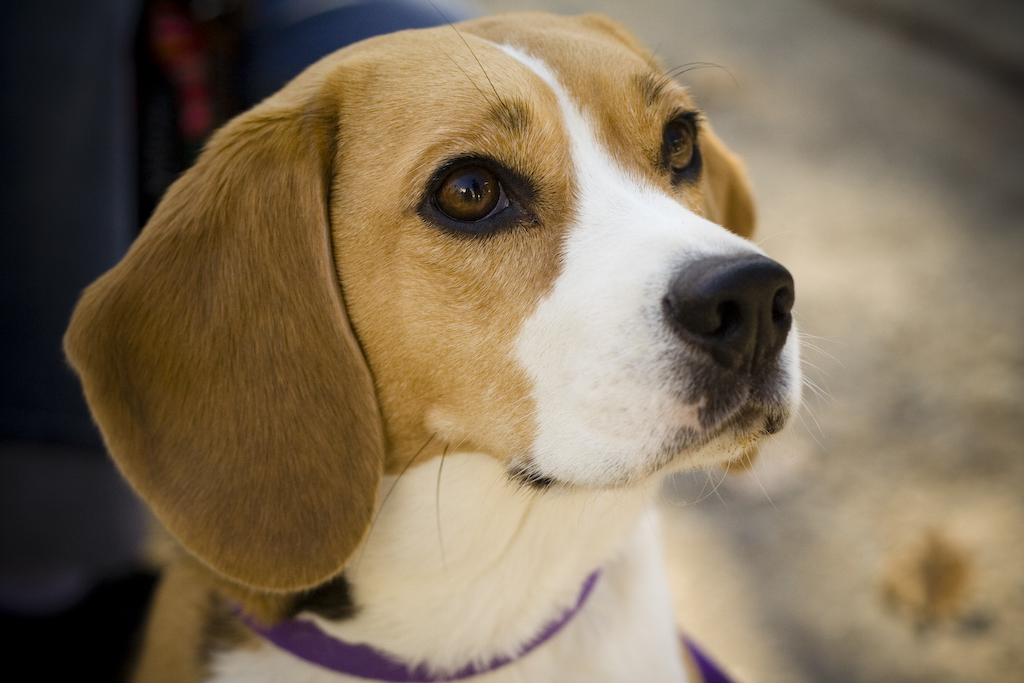 |
| Vital Statistics: |
| Place of Origin: England |
| Group: Sporting dog |
| Height: 21-27 in. |
| Weight: 80-115 lbs. |
| Life span: 10-13 yrs. |
| Trainability: moderate |
| Good with children: yes |
| Good with other pets: yes with dogs, may chase small animals |
March’s Dog of the Month
The Otterhound is a large affectionate hound that finds mud and dirt a perfect playground.
What is the origin of the Otterhound?
Although associated with England, Otterhounds resemble an old French hound, Vendeen. Used to hunt otters, the sport became unpopular after World War II. In the late 1970, otters became a protected species. Otterhounds first came to the U.S. at the start of the 20th century. It is an ancient breed, but a very rare one and is now considered endangered.
What does the Otterhound look like?
Otterhounds are large dogs, 24-27 inches tall and weighing 80-115 lbs. depending on gender. The large head is well covered with hair. The muzzle is square and sports a beard. Ears are long, low-set and pendulous. Eyes are deep-set. The tail is carried like a saber. The double coat is rough, medium long and oily. Color is any color of hound dog. The coat should be brushed weekly. Beard should be cleaned daily.
What is the temperament of the Otterhound?
Otterhounds are friendly, playful dogs. They can be stubborn and should have early firm, patient, positive training. They are good with other dogs but may chase small animals. They are good with children and very affectionate with their family. Otterhounds should have long daily walks on a leash. They can jump quite high, so a secure, tall fence is necessary.
What is the Otterhound used for?
They love to hunt and especially swim and will follow a scent for hours. Otterhounds are loving family companions.
Possible Health Issues
Hip/elbow dysplasia, epilepsy, bloat/gastric torsion, Glanzmann’s thrombosthenia (fatal bleeding disorder).
- American Cocker Spaniel
- Barbet
- Boulet Griffon
- Boykin Spaniel
- Bull Terrier
- Clumber Spaniel
- Curly-coated Retriever
- Dalmatian
- English Cocker Spaniel
- English Setter
- English Springer Spaniel
- Flat-coated Retriever
- German Shorthaired Pointer
- Golden Retriever
- Gordon Setter
- Harrier
- Irish Setter
- Irish Water Spaniel
- Kishu Inu
- Kooiker Hound (Kooikerhondje)
- Labrador Retriever
- Lagotto Romagnolo
- Landseer
- Mountain Cur
- Nova Scotia Duck Tolling Retriever
- Picardy Spaniel
- Poodle
- Pudelpointer
- Redbone Coonhound
- Redtick Coonhound
- Rhodesian Ridgeback
- Spinone Italiano
- Stabyhoun
- Sussex Spaniel
- Telomian
- Treeing Tennessee Brindle
- Vizsla
- Weimaraner
- Welsh Springer Spaniel
- Wirehaired Pointing Griffon
- Wirehaired Styrian Mountain Hound
- Wirehaired Vizsla
- Airedale Terrier
- Beagle
- Bedlington Terrier
- Bluetick Coonhound
- Border Collie
- Border Terrier
- Bull Terrier
- Bulldog
- Bullmastiff
- Ca de Bou
- Cavalier King Charles Spaniel
- Clumber Spaniel
- Collie
- Curly-coated Retriever
- Dandie Dinmont Terrier
- English Cocker Spaniel
- English Foxhound
- English Setter
- English Springer Spaniel
- English Toy Terrier
- Flat-coated Retriever
- Golden Retriever
- Greyhound
- Harrier
- Jack Russell Terrier
- Lakeland Terrier
- Lancashire Heeler
- Llewellyn Setter
- Manchester Terrier
- Mastiff
- Norfolk Terrier and Norwich Terrier
- Old English Sheepdog
- Old English Terrier
- Parson Russell Terrier
- Shetland Sheepdog
- Smooth and Wire-haired Fox Terrier
- Sussex Spaniel
- Welsh Terrier
- Whippet
- Wire Fox Terrier
- Yorkshire Terrier



